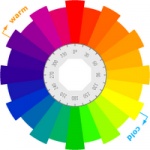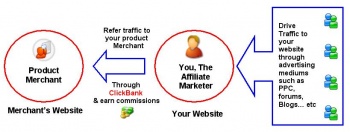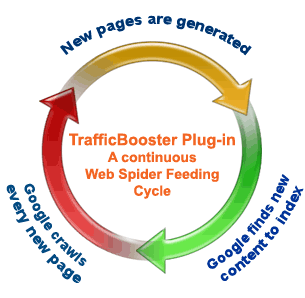Internet marketing success could be defined differently for each and every person online, although I think that there are some very specific guidelines by which we can measure internet marketing success.
I think that internet marketing success has a lot to do with the original intent of each individual marketer. When you get online and decide you want to do something online, then that is your personal measure of success in your life, at least as it pertains to internet marketing success.
When you get started online, you might be thinking that internet marketing success is to make an extra $100 per month. Or maybe you think that internet marketing success is just getting a web site live and online – and that is a perfectly good measure of success online!
For me, online marketing success is that I can work 100% from the freedom of my own home – and with wireless internet, I can literally work anywhere my laptop gets a wireless signal. For me, that is success.
So you have to define for yourself what is your definition of success online. Is internet marketing success to have a web site live, or is it to have some set number of pages online. Or is internet success to you some amount of income? Or maybe internet marketing success is some combination of all of these. Maybe for you it is the freedom of working for yourself, but also incorporates a measure of income also.
What is internet marketing success to you?
Do you want to learn more about how I do it? I have just completed my brand new guide to article marketing success, ‘Your Article Writing and Promotion Guide’

 You’ve gone ahead and launched a Web site. How do you get anyone to notice you online, with the millions of sites already there? You need to be ranked on various search engines so that visitors can find you. More visitors means the potential for attracting more customers, which is why you went online in the first place. It’s important to get your page ranked as highly as possible (preferably in the top 10); Web surfers are notorious for having a very short attention span and want to find what they need quickly and efficiently. They simply are not going to wade through 100’s of sites to find what they are looking for.
You’ve gone ahead and launched a Web site. How do you get anyone to notice you online, with the millions of sites already there? You need to be ranked on various search engines so that visitors can find you. More visitors means the potential for attracting more customers, which is why you went online in the first place. It’s important to get your page ranked as highly as possible (preferably in the top 10); Web surfers are notorious for having a very short attention span and want to find what they need quickly and efficiently. They simply are not going to wade through 100’s of sites to find what they are looking for. So how do you actually get listed? Well, you can sit back and let the search engine spiders find your site or you can submit your site to search engines and web directories on your own. Most people use a combination of the two methods. The
So how do you actually get listed? Well, you can sit back and let the search engine spiders find your site or you can submit your site to search engines and web directories on your own. Most people use a combination of the two methods. The  If you are the owner of a site designed to promote a product or service – such as affiliate marketing sites, the first thing you want to do is ensure that your site attracts an ever-increasing number of visitors. Even if a potential customer is not ready to make a purchase yet, if your site is easy to navigate and features helpful information, chances are they will “bookmark” it to return at a later time.
If you are the owner of a site designed to promote a product or service – such as affiliate marketing sites, the first thing you want to do is ensure that your site attracts an ever-increasing number of visitors. Even if a potential customer is not ready to make a purchase yet, if your site is easy to navigate and features helpful information, chances are they will “bookmark” it to return at a later time.
 When choosing colors for your Web site, it is important to think through your choice carefully. The use of colors that are pleasing to the eye might well lead to visitors spending more time at your site or even an affiliate marketing website, which will lead to greater sales, but a poor choice of color combinations can also have an effect on an individual’s mood or prove to be distracting or irritating.
When choosing colors for your Web site, it is important to think through your choice carefully. The use of colors that are pleasing to the eye might well lead to visitors spending more time at your site or even an affiliate marketing website, which will lead to greater sales, but a poor choice of color combinations can also have an effect on an individual’s mood or prove to be distracting or irritating. If you are a Web site owner, it is a very good idea to consider participating in one (or more) of the affiliate marketing programs available on the Internet. Basically, affiliate programs are straight commission sales opportunities. You promote a certain vendor’s product or materials on your Web site. When visitors to your site buy the product or materials, you get rewarded with a percentage of the value of that sale.
If you are a Web site owner, it is a very good idea to consider participating in one (or more) of the affiliate marketing programs available on the Internet. Basically, affiliate programs are straight commission sales opportunities. You promote a certain vendor’s product or materials on your Web site. When visitors to your site buy the product or materials, you get rewarded with a percentage of the value of that sale.

